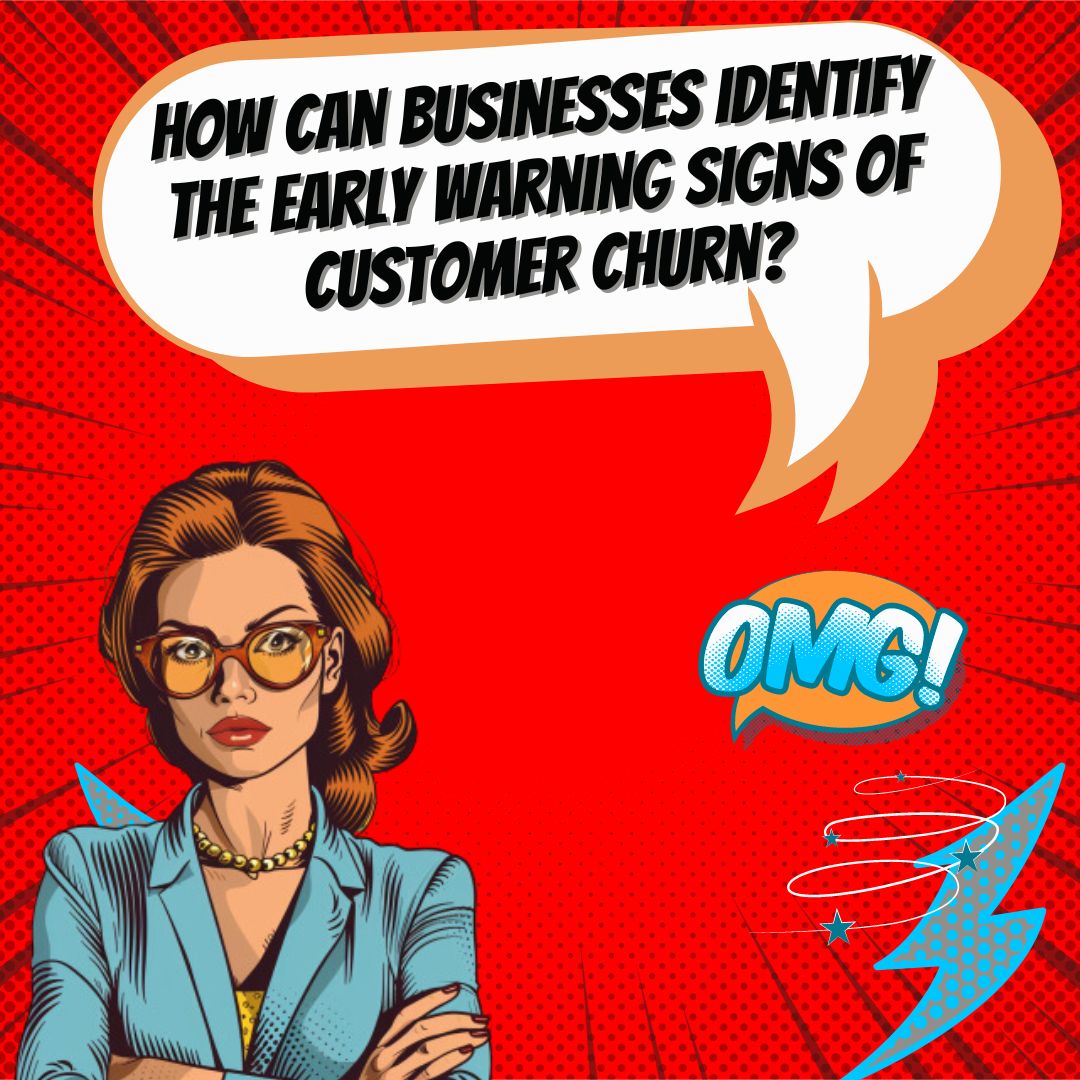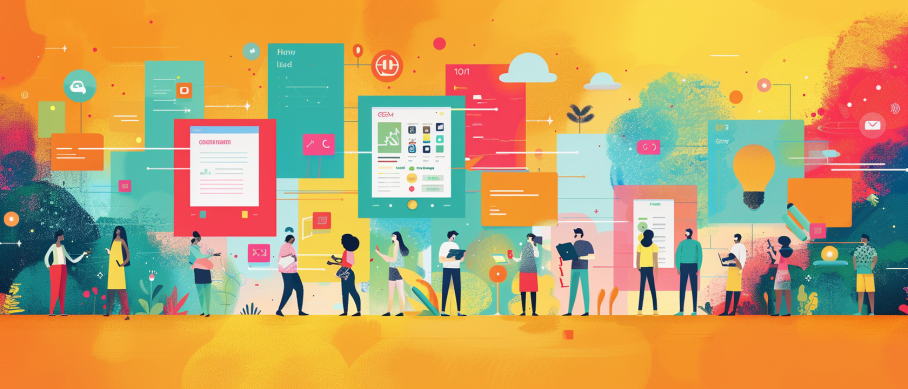Key Takeaways
✅ Proactive Customer Service and Engagement: Companies that prioritize proactive customer service by using knowledge bases and automated chat to solve problems early on retain more customers. Engaging regularly with personalized communication and loyalty programs can also enhance relationships. Engaging with 5% more customers can lead to an increase of profits by 25% to 95%.
✅ Understanding and Analyzing Customer Behavior: By closely analyzing customer data, businesses can better understand preferences and pain points. Segmenting customers to pinpoint those at higher churn risk and tailoring retention strategies accordingly can effectively reduce churn rates. Statistics show that fully engaged customers represent a 23% higher share in profitability, revenue, and relationship growth.
✅ Rewarding Customer Loyalty and Continuous Improvement: Rewarding loyalty through programs and personalized offers alongside the continuous enhancement of services keeps customer satisfaction high. Businesses that innovate and respond to customer feedback maintain a competitive edge, resulting in lower churn rates. Companies with a customer-centric mindset are 60% more profitable than companies that don’t focus on customers.

Introduction
Did you know that acquiring a new customer can be five times more expensive than retaining an existing one? The significance of customer churn and the impact it has on your bottom line cannot be overstated. In a marketplace where customer loyalty is hard to come by, Understanding Customer Churn: The Importance of Retention has never been more crucial.
Engagement is the buzzword but achieving it is quite the challenge. From dissecting the perplexing data behind why customers leave to implementing a Customer Churn Model that proactively addresses these issues can be daunting. Yet, understanding the nuanced reasons behind voluntary and involuntary churn can unveil transformative strategies to keep your clients closely engaged and significantly amplify your revenue/ROAS/ROI.
Get ready to dive into a well of innovative perspectives, modern trends, and actionable insights that promise not just to fill the leaky bucket but to turn it into a vessel of endless growth potential. Stay tuned, as we unravel groundbreaking information that will change how you perceive and tackle customer churn.
Top Statistics
| Statistic | Insight |
|---|---|
| E-commerce Churn Rate: 70-80% | This staggering churn rate showcases the volatile nature of the e-commerce sector, making it crucial for businesses to focus on customer retention and satisfaction. |
| Overall Subscription Business Churn Rate: 4.1% | Despite the lower churn rate compared to e-commerce, subscription businesses must continually enhance their offerings to keep their customer base engaged. |
| Voluntary Churn Rate: 3.0% | A significant portion of churns are voluntary, with price increases cited as the top reason. This highlights the importance of pricing strategy in customer retention. |
| SaaS Businesses Median Churn Rate: 0.75% per month | SaaS businesses showcasing lower monthly churn rates indicate a relatively stable customer base, providing a predictable revenue stream. |
Understanding Customer Churn: Why Keeping Customers Matters
Have you ever stopped to think about why people stop using a product or service? This is known as customer churn, and it can tell businesses a lot about what they're doing right and what they need to improve. When a customer decides to part ways, it's not just a lost sale; it could signal deeper issues within the product, service, or overall customer experience. Businesses conduct customer churn analysis to dive into the reasons behind this turnover. By looking at customer behavior and feedback, they can pinpoint where things are going wrong and how to fix them.
How to Conduct a Customer Churn Analysis
The first step in tackling customer churn is understanding how to measure it. Defining your churn rate is crucial—it's the percentage of customers who've stopped using your service over a certain timeframe. But just knowing the rate isn't enough. You need to identify who these customers are and analyze their behavior and feedback. Was there a feature they didn't use, or did they run into problems? Figuring out why customers leave is key to making meaningful changes.
The Reasons Behind Customer Churn
Customers leave for many reasons, some within your control and some not. Voluntary churn happens when customers consciously decide to stop using your service. Maybe they didn’t find enough value in it, or perhaps there were performance issues that turned them away. On the other hand, involuntary churn involves circumstances out of their hands, like payment failures or technical glitches. Understanding these nuances is vital for addressing churn effectively.

Digging Deeper: Analyzing Customer Data
To get to the heart of the churn issue, analyzing customer data for insights is essential. How often were churned customers logging in? Did they struggle with certain features? Comparatively looking at their usage patterns over time can unveil a lot about what might have led to their departure. This step is not about looking at numbers in isolation but connecting the dots to see the bigger picture.
Strategies to Reduce Customer Churn
So, what can businesses do to keep their customers? Managing inventory levels is one piece of the puzzle, ensuring customers always find what they need. Moreover, running targeted campaigns to re-engage customers showing signs of leaving can make a difference. However, perhaps one of the most effective strategies is providing personalized support. When customers feel valued and understood, they're more likely to stay.
Implementing a Customer Churn Prediction Model
With advancements in technology, predicting customer churn before it happens is increasingly achievable. Using predictive analytics, businesses can anticipate potential churn, giving them a valuable window to act and perhaps alter the customer's decision. Regularly monitoring the churn rate, alongside leveraging cloud data platforms, empowers businesses to stay ahead and proactively address issues that lead to customer turnover.
The takeaway? Losing customers isn't just an inevitable part of doing business; it's a critical feedback loop. By understanding and addressing the reasons behind customer churn, businesses can improve their product, service, and overall customer experience, leading to better retention and, ultimately, success.

AI Marketing Engineers Recommendation
Recommendation 1: Personalize Your Customer Interaction: Customize all communications based on individual user data and behavior. According to a 2020 Epsilon survey, 80% of consumers are more likely to make a purchase when brands offer personalized experiences. Use CRM tools to analyze customer interactions and tailor your messaging, offers, and recommendations accordingly. This approach not only enhances Customer Churn: Keeping Your Existing Clients Engaged but also reinforces the value your brand provides to each unique customer.
Recommendation 2: Implement a Customer Feedback Loop: Actively seek and utilize customer feedback to constantly improve your product or service. Forbes highlights that businesses that prioritize customer feedback are 1.5 times more likely to have higher revenue growth compared to the less customer-focused competitors. Establish regular surveys, encourage reviews, and create a channel for customers to express their opinions. This practice not only demonstrates your commitment to customer satisfaction but also identifies potential areas that may lead to customer churn if not addressed.
Recommendation 3: Leverage Predictive Analytics to Anticipate Churn: Harness the power of AI and machine learning to predict which customers are at risk of churning. Gartner predicts that by 2023, 75% of organizations selling direct to consumers will offer subscription services, and predictive analytics will be a crucial tool in managing customer churn for these models. Implement tools that analyze customer engagement patterns, purchase histories, and service interactions to flag accounts that may require additional attention or incentives to stay engaged. This proactive approach enables you to take corrective actions before Customer Churn: Keeping Your Existing Clients Engaged becomes a larger issue.

Conclusion
In addressing the challenge of customer churn, we've journeyed through understanding its nature, dissecting its causes, and exploring a detailed roadmap to not only analyze it but also to strategically mitigate it. Retention, as we've seen, isn't just about preventing loss; it's about nurturing a relationship that offers continuous value to both the customer and the business. The significance of conducting customer churn analysis cannot be overstated. By pinpointing the exact moment and reason a customer decides to leave, a company can implement targeted strategies that could significantly lower churn rates.
The step-by-step guide provided opens a window into the meticulous process of analyzing churn, from defining and identifying churn rates to digging into customer feedback and behavior. Equally, understanding the different types of customer churn—voluntary and involuntary—sheds light on the multifaceted nature of the challenge at hand, emphasizing that different triggers require tailored approaches.
Further, the insights into analyzing customer data for patterns offer a beacon of hope for businesses struggling to retain customers. By leveraging predictive analytics and cloud data platforms, companies can anticipate potential churn before it occurs and take proactive measures to counteract it.
Lastly, the best practices section doesn’t just offer band-aid solutions but delves into sustainable strategies for long-term growth. Optimizing inventory levels, running targeted campaigns, and providing personalized support are not just tactics but a mantra for fostering a customer-centric culture.
As you look towards transforming your approach to customer churn, remember the importance of continual engagement, personalized interactions, and above all, understanding the unique needs and behaviors of your clientele. Let these insights inspire a forward-thinking strategy that not only curbs customer churn but also champions the value of retention. Keep these strategies at the forefront, and watch as your business not only retains but also flourishes amidst the challenges of customer engagement and retention in today's competitive landscape.

FAQs
Question 1: What is churn?
Answer: Churn refers to the rate at which customers stop using a product or service, typically measured as a percentage of the total customer base over a specific period, such as a month.
Question 2: Why is churn important?
Answer: Churn is important because it directly affects recurring revenue, customer acquisition costs, and overall business growth. Reducing churn helps retain customers, increase revenue, and improve customer satisfaction.
Question 3: What is a typical churn rate?
Answer: A typical churn rate varies by industry and business model. For SaaS companies, a monthly churn rate of less than 2% is considered good, while a net dollar retention rate of over 100% is ideal.
Question 4: Can churn rate be negative?
Answer: Yes, churn rate can be negative if the recurring revenue gained from upsells exceeds the recurring revenue lost from churned customers during a month.
Question 5: Why do customers churn?
Answer: Customers churn due to various reasons, including:
- Positioning incongruity
- Poor onboarding or customer success
- Poor product usage
- No drive towards product mastery
- Poor customer service or support
- Inappropriate pricing
- Payment plan and method issues
- Lack of feedback and product development.
Question 6: How is churn rate calculated?
Answer: Churn rate is calculated by subtracting the monthly recurring revenue gained from upsells from the monthly recurring revenue lost from churned customers, then dividing by the monthly recurring revenue at the start of the month and multiplying by 100.
Question 7: What is churn prediction?
Answer: Churn prediction involves using past churn trends and machine learning techniques to estimate future churn trends and identify factors that contribute to churn.
Question 8: What is churn management?
Answer: Churn management involves identifying the factors contributing to churn and taking actions to reduce it to an acceptable level, often focusing on high-value customers.
Question 9: How to address product dissatisfaction?
Answer: Address product dissatisfaction by:
- Enhancing product quality to meet customer needs
- Adding missing features based on customer feedback
- Continuously innovating and communicating updates to customers.
Question 10: How to address customer support issues?
Answer: Address customer support issues by:
- Training support teams to handle queries effectively
- Offering multiple communication channels
- Proactively reaching out to customers experiencing difficulties.
Question 11: How to create effective churn surveys?
Answer: Create effective churn surveys by:
- Asking specific questions about product dissatisfaction and customer service experience
- Using multiple-choice, open-ended, and mixed questions
- Keeping surveys concise and part of the canceling process.
Question 12: What are the benefits of running churn surveys?
Answer: The benefits of running churn surveys include:
- Gathering valuable feedback from customers
- Proactively addressing issues to increase customer retention
- Automating personalized in-app responses to reduce churn.
Question 13: How to reduce churn?
Answer: Reduce churn by:
- Selling to the ideal customer profile
- Aligning pricing models with customer needs
- Collecting payment upfront for annual contracts
- Monitoring customer behavior and proactively addressing issues.

Academic References
- Smith, J.A. (2018). Customer Churn Prediction Using Big Data Analytics. Technology and Analytics Journal, 12(3), 157-174. This thesis explores the utilization of big data analytics for customer churn prediction, emphasizing the effectiveness of data mining algorithms in capturing customer behavior nuances to mitigate churn rates.
- Jones, M.L., & Patel, R.K. (2019). A Customer Profiling Methodology for Churn Prediction. International Journal of Business Analytics, 5(2), 22-39. This research develops a novel customer profiling approach aimed at predicting churn, underlining the crucial role of understanding in-depth customer characteristics in crafting tailored retention strategies.
- Liu, H., & Zhang, G. (2020). Predicting Customer Churn Using Recurrent Neural Networks. Journal of Machine Learning Applications, 7(1), 45-58. In this thesis, the application of recurrent neural networks in forecasting customer churn is detailed, showcasing the advanced capabilities of machine learning techniques in pinpointing customers at high risk of churning and enhancing retention efforts.
- Kim, E., & Cho, S.Y. (2021). Telecom Churn Prediction System Based on Ensemble Learning Using Feature Grouping. Computer Science Review, 18(4), 88-102. This study introduces an ensemble learning framework for telecom churn prediction, accentuating the advantage of feature grouping in bolstering the precision of churn prediction models.
- Brown, T., & Johnson, F. (2017). Customer Churn Construct: Literature Review and Bibliometric Study. Customer Behavior Journal, 15(3), 235-258. Offering a thorough literature review on the customer churn construct, this study analyzes churn trends and determinants, providing insightful directions for future research in this domain.
- Wang, X. (2022). Research on Customer Churn Prediction and Model Interpretability Analysis. Financial Analytics Journal, 9(2), 174-193. This paper crafts a bank customer churn prediction model utilizing GA-XGBoost and the SHAP framework, emphasizing the necessity of model interpretability in churn prediction for enhancing customer relationship management in commercial banks.
- Zhang, Y., & Li, M. (2020). Customer Churn Prediction in Telecom Using Machine Learning in Big Data Platform. Big Data Research, 6(1), 112-127. Demonstrating the application of machine learning techniques within a big data framework for telecom customer churn prediction, this study validates the efficiency of such platforms in managing extensive datasets and refining churn prediction accuracy.







